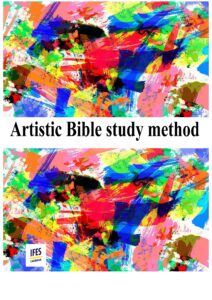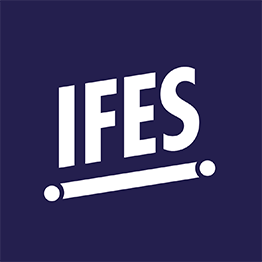 I am happy to share with you an approach we use in the CARIFES region called “The Artistic Bible study method”. It was developed to guide students into the Scriptures from an artistic point of view.
I am happy to share with you an approach we use in the CARIFES region called “The Artistic Bible study method”. It was developed to guide students into the Scriptures from an artistic point of view.
This way of reading can help participants appreciate the details of a passage, while learning to communicate that appreciation in a creative and easy way. What remains of central importance is that we are engaging in the process of exploration. As an additional benefit, students may discover a new talent and enjoy the experience.
However, allow me a few words of caution before explaining this method further. While it is good, this approach may not be adequate in all cases, and it is the leader’s responsibility to manage the choice of texts accordingly. The goal is for participants to respond to the Bible passage using multiple senses and from different perspectives, increasing the possibilities for more comprehensive appreciation of the material. As it is not a rigid method, variations can be tested and implemented.
Regarding the tools needed, every participant should have paper, pencils, and pens in different colours. If tablets are available, these could also be used.
In the first stage, participants must explore and focus on the chosen text for 5 minutes. This time allows each person to consider their understanding of the passage and how they might express that understanding in their drawing. After this, participants should be given enough time to recreate their ideas on paper and share them with the group.
Some questions that can prompt reflection and creative response include:
– Are there any keywords that catch my attention?
– What is clear or not clear?
– What relevant information or important events do I see in the passage?
– What does this mean and how is this speaking to me?
When everybody has shared and explained their drawings, there is an opportunity for what we call “Debate”. Every participant will share one thought about each drawing, considering questions such as:
– Which drawing speaks to you? Why?
– What is your favourite? Why?
– What would you do differently?
Finally, we have what is called “Go Further”. In this stage, participants have the chance to draw something new about the passage and explain what about it is different and why. As an alternative to the ‘’Debate’’, after finishing their first drawings, the group can study the text using the traditional method of ‘’Observation, Interpretation, and Application’’, after which they should complete a second drawing for discussion.
We have tested this method during a training session with students in the region and, according to the survey taken at the end of this training, it was their favourite part. I was impressed with how clearly their drawings expressed the students’ understanding of the text, but also how diverse and rich lessons from the same text can be.
Jean-Davy Frair
CARIFES regional staff team as a Francophone Staff

